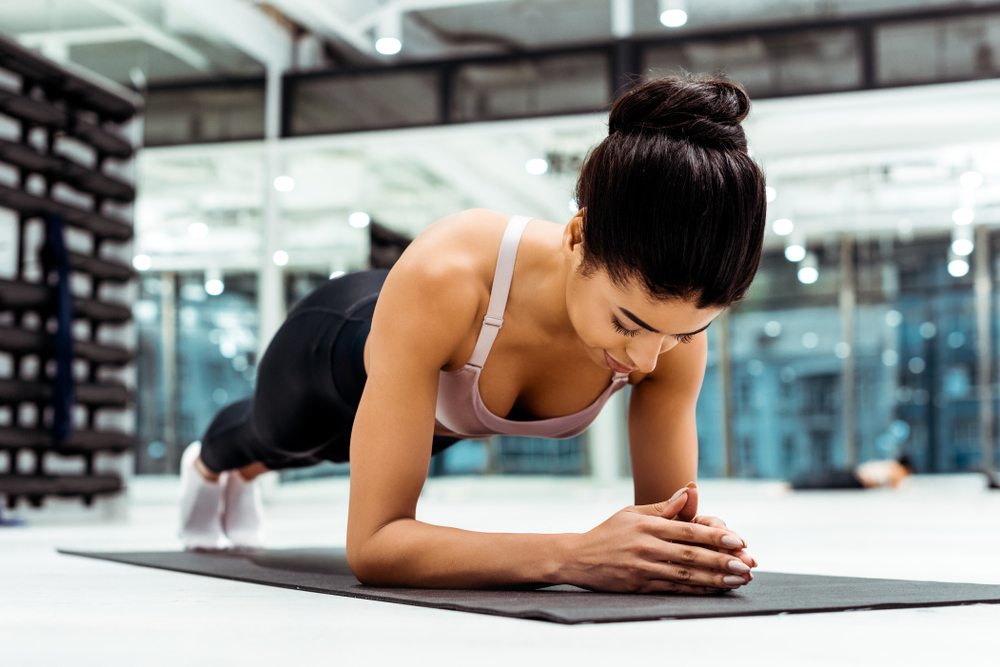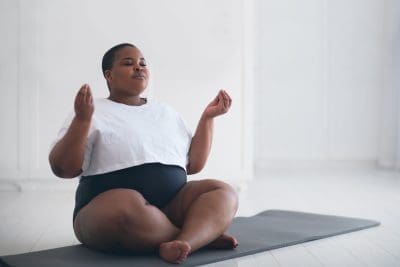You’ve seen those viral social media challenges. Someone holding a plank for what seems like an eternity, face contorted in agony, body trembling, all while the clock ticks mercilessly onward. Maybe you’ve even attempted to join the plank marathon club yourself, convinced that longer equals better when it comes to this popular exercise.
Here’s the liberating truth that might shock you. That woman who set the world record with her mind-blowing 4-hour, 19-minute, and 55-second plank? She wasn’t setting a fitness goal you should aspire to. In fact, fitness experts agree that planking for even a tiny fraction of that time delivers all the core-strengthening benefits you need.
The perfect plank duration might surprise you
Prepare to have your fitness world rocked. The optimal plank duration isn’t measured in hours or even many minutes. For most people, the sweet spot falls between 30 seconds and one minute per set. That’s it. Just 60 seconds standing between you and maximum plank benefits.
Research shows the average plank endurance for women hovers around 90 seconds total, while men typically manage just under 2 minutes. But these are maximum endurance times, not target durations for optimal results. The true goal isn’t about the clock at all. It’s about maintaining impeccable form for whatever duration you can manage.
Think of planking like carrying a heavy object. You can either carry it with perfect posture for a short distance or with progressively worse form for longer. The first approach strengthens your body. The second risks injury and teaches poor movement patterns. The same principle applies to your plank. A perfect 30-second plank trumps a sloppy 2-minute one every single time.
When you maintain proper form, even short planks create tremendous tension throughout your core muscles. This tension, not the time spent holding it, drives the strength adaptations your body makes. Once your form starts to break down, you’re no longer getting the intended benefits and might actually be reinforcing problematic patterns.
The technique that maximizes results with less suffering
Here’s a game-changing approach that makes planks more effective while reducing the suffering factor. Instead of one marathon hold, try breaking your plank into manageable chunks with brief rest periods in between.
Try this method favored by top trainers. Hold a perfect plank for 10 seconds, then rest for 5-10 seconds while maintaining your position. Repeat this cycle for three to six sets. This interval approach delivers comparable strengthening benefits to a continuous 30-60 second hold while making the exercise much more approachable.
For a structured routine, aim for three sets of planks, working up to 60 seconds each. If you’re new to planking, start with whatever duration allows you to maintain proper form, even if that’s just 10 or 15 seconds. Gradually increase your hold time as your strength improves, but never at the expense of form.
The one-minute mark often represents an ideal target for maximizing benefits. After you can comfortably hold a perfect plank for 60 seconds, don’t just keep adding time. Instead, increase the intensity by engaging your muscles more deliberately. Squeeze your abs, glutes, and quads harder. Pull your shoulders away from your ears. Draw your navel toward your spine. These subtle adjustments make your plank significantly more challenging without requiring extra time.
Why your core deserves this attention
Your core muscles aren’t just about creating those coveted ab definitions. They form the functional center of your body, integrating movement between your upper and lower halves while providing the stability that powers everything from lifting groceries to playing sports.
The core muscle group includes far more than just the visible “six-pack” muscles. Your erector spinae run along your spine, providing crucial back support. The obliques wrap around your sides, enabling rotation and lateral movement. The transverse abdominis acts like an internal corset, stabilizing your pelvis and spine. The rectus abdominis creates that visible front definition when body fat is low enough.
When these muscles work together efficiently, everyday movements become easier. Your posture improves. Athletic performance enhances. Even chronic back pain often diminishes or disappears entirely. A 2019 study published in PLOS ONE confirmed that consistent core training significantly improves endurance and balance, translating to better function across all physical activities.
Unlike isolated exercises such as crunches or sit-ups that target specific muscles, planks engage your entire muscular system. They strengthen not just your abs but also your shoulders, arms, back, hips, and legs. This integrated approach makes planks one of the most efficient exercises in your fitness arsenal.
Mastering the perfect plank technique
The difference between a beneficial plank and a potentially harmful one comes down to technique. Here’s how to ensure your plank delivers maximum results while minimizing risk.
Start in a face-down position on your mat. Place your elbows directly under your shoulders if doing a forearm plank, or hands directly under shoulders for a high plank. Step your feet back until your body forms a straight line from heels to head. Position your feet hip-width apart for stability.
The most common mistake happens right here. Many people either let their hips sag toward the floor or lift them too high, creating an inverted V shape. Instead, imagine a straight line running from your ankles through your knees, hips, shoulders, and ears. This alignment activates your core properly while protecting your lower back.
Your gaze should point slightly ahead of your hands, keeping your neck in a neutral position. Avoid the temptation to look up, which strains your cervical spine, or down, which drops your head out of alignment.
Now for the active engagement that transforms a passive hold into a muscle-building exercise. Draw your navel toward your spine as if preparing for a punch to the stomach. Squeeze your glutes firmly. Engage your quad muscles by lifting your kneecaps slightly. Pull your shoulders away from your ears while keeping your chest open.
This full-body tension creates what fitness experts call “irradiation,” where engaging one muscle group increases the activation of surrounding muscles. The result is a significantly more effective exercise that builds functional strength throughout your entire body.
Taking your plank to the next level
Once standard planks become manageable, don’t just extend your hold time indefinitely. Instead, introduce variations that challenge your stability and engage your muscles in new ways.
Shoulder taps add an anti-rotation challenge. While holding a high plank position, lift one hand to tap the opposite shoulder, then return it to the floor. Alternate sides while resisting the urge to rotate your hips or shoulders. This seemingly simple movement dramatically increases the demand on your core stabilizers.
For an anti-extension challenge, try plank arm reaches. From a forearm plank, extend one arm forward along the floor, hold briefly, then return to the starting position. This variation forces your core to work overtime to prevent your lower back from arching.
Side planks target your often-neglected lateral core muscles. Rotate onto one forearm or hand with feet stacked, creating a straight line from ankles to head. The obliques on your supporting side must work intensely to maintain this position against gravity.
These variations do more than prevent boredom. They ensure your core develops balanced strength in all movement planes, creating functional fitness that translates to improved performance in both athletic endeavors and daily activities.
The bottom line on plank perfection
The next time you feel inadequate watching someone hold a plank for seemingly endless minutes, remember this. The effectiveness of your plank isn’t measured by the seconds ticking by but by the quality of your form and the intensity of your muscle engagement.
A perfect 30-second plank delivers more benefits than a sloppy 3-minute one. Focus on mastering technique before pursuing duration. Build gradually through multiple sets rather than forcing yourself into marathon holds. And most importantly, listen to your body’s signals. Sharp pain, particularly in your lower back, indicates something’s wrong with your technique.
With consistent practice, you’ll develop a stronger, more stable core that serves you in everything from improving your posture to enhancing athletic performance. The humble plank, when performed correctly, remains one of the most effective exercises available, requiring no equipment and minimal space while delivering maximum results.
So set aside those intimidating world records and focus instead on your own perfect plank. Your body will thank you with improved function, reduced pain, and yes, even those aesthetic benefits many of us secretly desire. The path to core strength isn’t measured in hours but in the quality of each movement you make.















